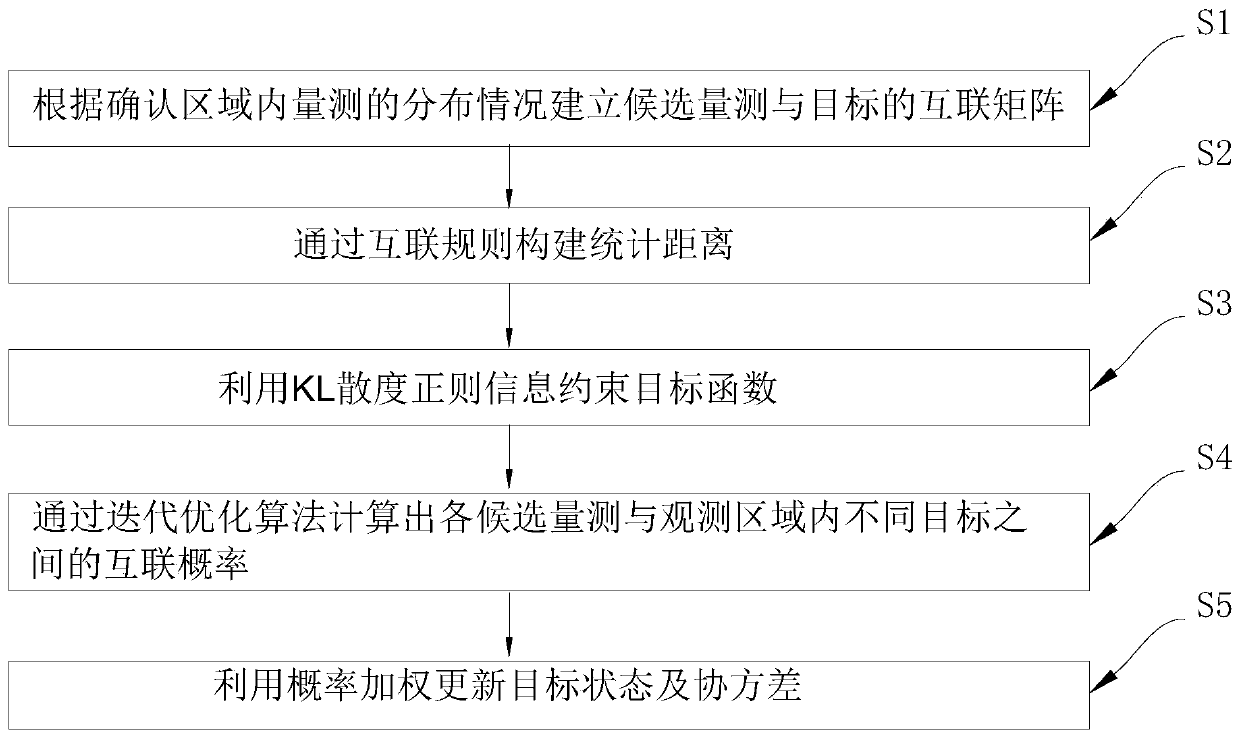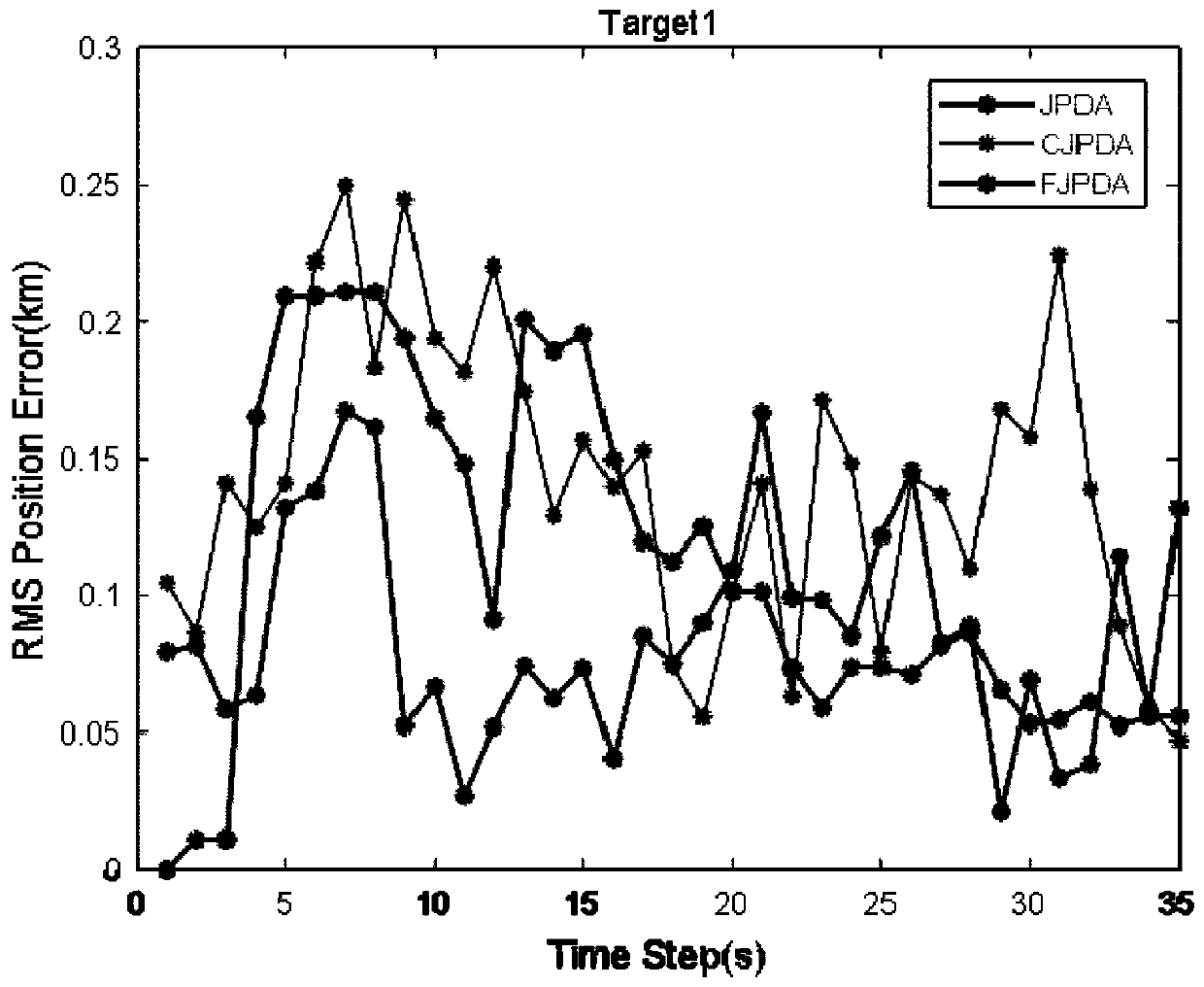Fuzzy data association method in clutter environment and multi-target tracking method
A technology of fuzzy data and environment, applied in the field of target tracking, can solve problems such as not proposing specific solutions, not being able to provide new target state estimation, etc., and achieve the effect of real-time improvement
- Summary
- Abstract
- Description
- Claims
- Application Information
AI Technical Summary
Problems solved by technology
Method used
Image
Examples
Embodiment 1
[0045] The most important and difficult problem in multi-target tracking technology is how to carry out effective data association. Currently, the mainstream effective data association methods are: Joint Probabilistic Data Association (JPDA), Simple Joint Probabilistic Data Association (CJPDA), Multiple Hypothesis Tracking (MHT), Multiple Probability Hypothesis (MPH) and Particle Filtering.
[0046]In the clutter environment, the joint probabilistic data association method has good performance for multi-target tracking. However, the number of joint events in this method is an exponential function of the number of all candidate echoes. As the echo density increases, the computational load is geometrically increase. The simple joint probability data association roughly calculates the probability and sets the threshold to construct a new simplified confirmation matrix, which reduces the amount of calculation. Since the sum of the probabilities is not zero, there will be missed de...
Embodiment 2
[0084] Corresponding to Embodiment 1, this embodiment provides a multi-target tracking method, which includes the following steps:
[0085] Step 1, establish the interconnection matrix between candidate measurements and targets according to the distribution of measurements in the confirmation area;
[0086] Step 2, construct statistical distance through interconnection rules;
[0087] Step 3, using KL divergence regular information to constrain the objective function;
[0088] Step 4, calculate the interconnection probability between each candidate measurement and different targets in the observation area through an iterative optimization algorithm;
[0089]Step 5, using probability weighting to update the target state and covariance, so as to realize the tracking of multiple targets.
[0090] Wherein, in step 1, the interconnection matrix between the candidate measurement and the target is established according to the distribution of the measurement in the confirmation area...
PUM
 Login to View More
Login to View More Abstract
Description
Claims
Application Information
 Login to View More
Login to View More - R&D
- Intellectual Property
- Life Sciences
- Materials
- Tech Scout
- Unparalleled Data Quality
- Higher Quality Content
- 60% Fewer Hallucinations
Browse by: Latest US Patents, China's latest patents, Technical Efficacy Thesaurus, Application Domain, Technology Topic, Popular Technical Reports.
© 2025 PatSnap. All rights reserved.Legal|Privacy policy|Modern Slavery Act Transparency Statement|Sitemap|About US| Contact US: help@patsnap.com



